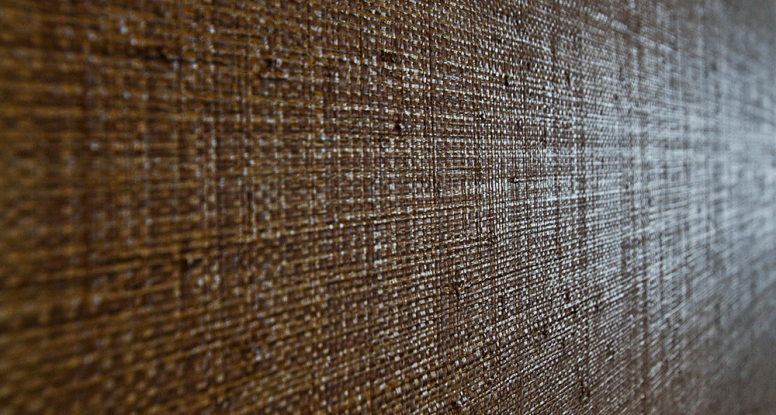
How Do I Know I’m Getting a Quality Wallcovering?
Firstly, it is important to figure out what your own definition of quality is. The theory goes that, as with any product, quality wallpaper is established through premium materials, and time. Time is the most valuable of all materials, and the more time a craftsman has put into the product, the greater the overall result will be, right?
But is there more to it than that?
Art and Craftsmanship
In the context of wallpaper, attention to detail can take the form of such labour-intensive toils as hand-painting or hand-embroidering each panel. While this inevitably drives the cost up, it ensures that what adorns your walls is one of a kind, and is generally more precious for having had an artist agonize over every inch of it. Perhaps we would call this quality craftsmanship.
Quality can also mean materials, such as an array of textured, hand-woven grasscloths, paper-backed natural linens, woven silk, or embossed vinyl. Textile wallpapers can also include strings, rattan, sand, jewels, actual impressed leaves, and much more.
But to many, quality means an ability to stand the test of time. However, when it comes to wallcovering installation, some forethought makes it possible to enjoy the chic alongside the practical.
Durability
Outside of the quality of the product itself, the type of wallpaper you choose for which area plays a large role in how long it stands up. Choosing a wallcovering that’s either washable or scrubbable will allow for at least a certain level of stain resistance. While all wallpaper should provide your walls with protection from normal wear and hide dirt and unwelcome marks, certain wallcoverings are more durable and scrubbable. This makes them the most suitable for heavily used areas, such as children’s playrooms. Some wallpaper can withstand humidity and moisture, and, thereby, are best in kitchens and bathrooms. Meanwhile, others are quite fragile and vulnerable to scuffing, and, therefore, are meant for rooms with low traffic or activity.
What Commercial Wallpaper Goes Through
If you are in the market for commercial wallpaper, you have a certain advantage when it comes to quality. All papers are put through testing on attributes like tensile strength, minimum coating weight, coating adhesion, tear strength, abrasion resistance, flame spread, heat aging, stain resistance, smoke development, and shrinkage. Each wallpaper printing company performs visual spot checks on their products to make sure they conform to manufacturing values. Wood pulp and ground wood paper backings are checked for foreign matter that may be imbedded in the backing. When the backing is printed, it’s checked for proper adhesion of the vinyl, trimmed edges, undesired shading, and the correct colour.
Putting the Product through its Paces
If you are not looking into commercial wallpaper, chances are you’ll have to do the dirty work yourself. Regrettably, for the realist, beautiful, high end materials are only as good as the sum of their parts. Therefore, quality may be defined by elements like breathability and resistance to wear and aging. Try the following tests:
- Sniff: Open up the sample and give ‘er a big old smell. If it smells highly synthetic, it probably is. So don’t be paying top-organic-material-dollar for something that’s not.
- Pull: Yes, tug the sample. If the paper is made of natural materials, it will not deform easily, and will recover quickly. Plastic, on the other hand, is highly susceptible to deformation.
- Rub: A chemical paper will feel rough, whereas a natural paper will feel soft and delicate. You may also want to try wiping the surface with a wet cloth to observe if any fading occurs.
- Trial by Water: Dribble a few drops of water on the back of the paper. If there is no evidence on the front of the paper, this may point to a lack of breathability. A natural material should bubble because of the water. And yes, it does seem strange to be assigning brownie points based on damage.
- Trial by Fire: For the most extreme quality tester, after exhausting all other options, a smoke test may be in order. If you find yourself in the position to safely conduct this experiment, burn a sample. Yup. Burn it. If the smoke is white, then you can be satisfied that your paper is not comprised of every chemical known to man. (It is recommended that you perform this test only with the use of an outdoor fire pit and under the supervision of your interior decorator.)
